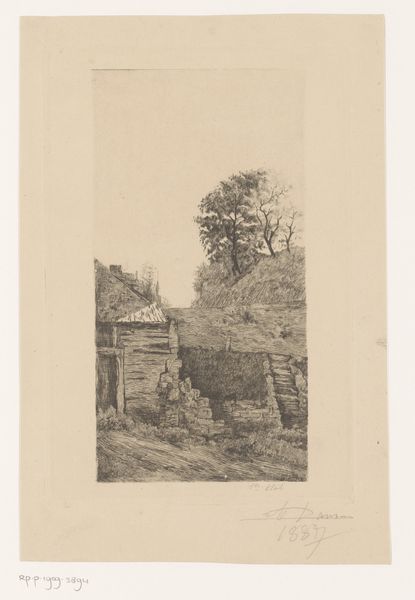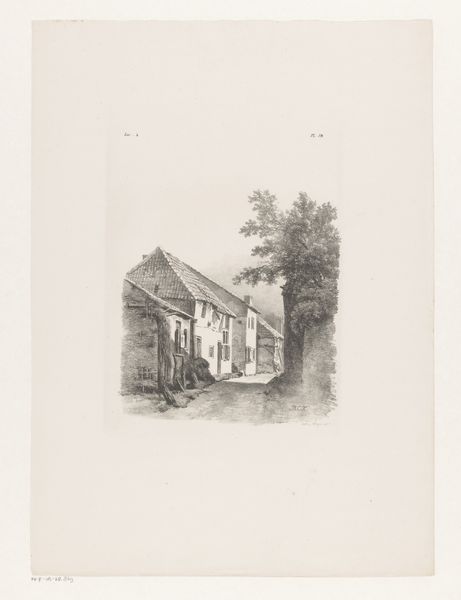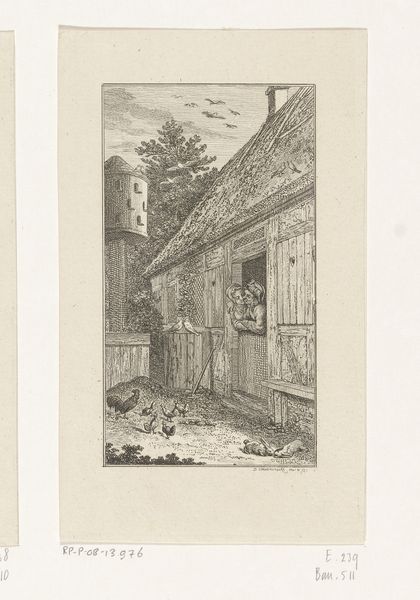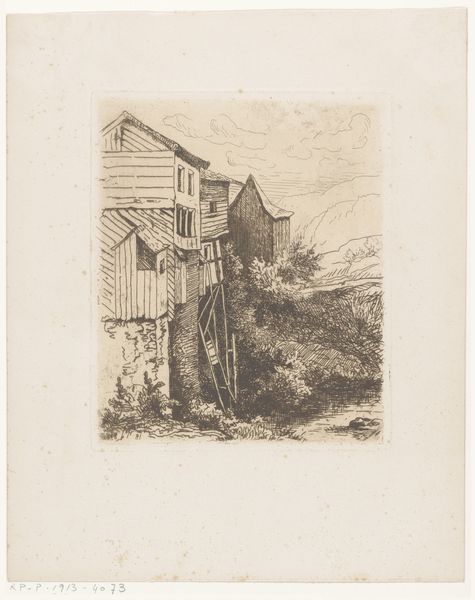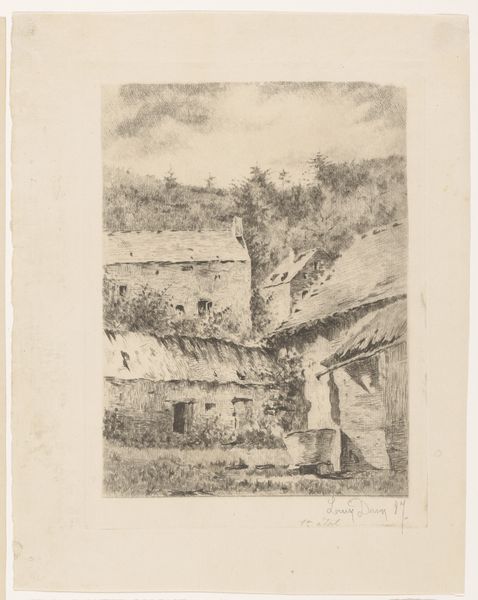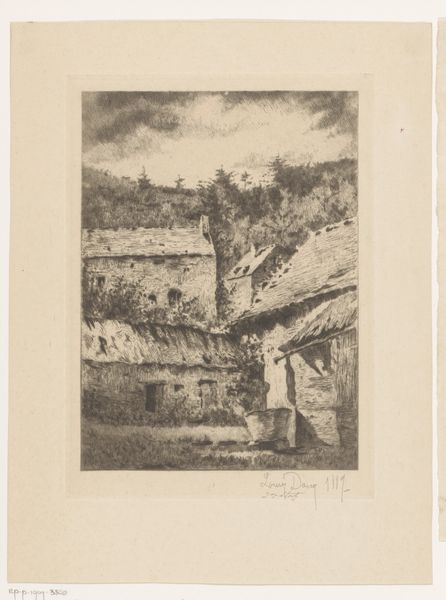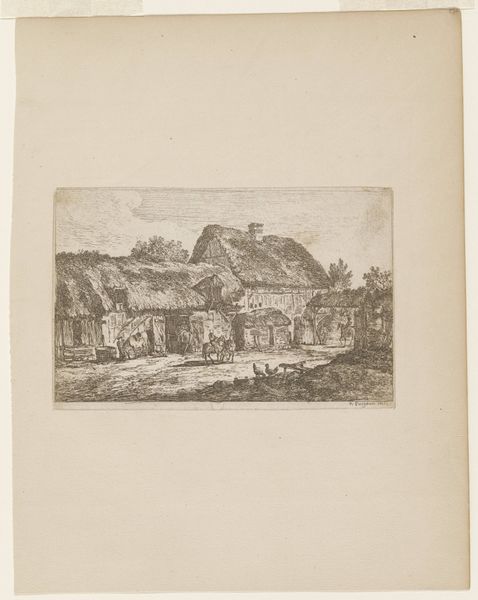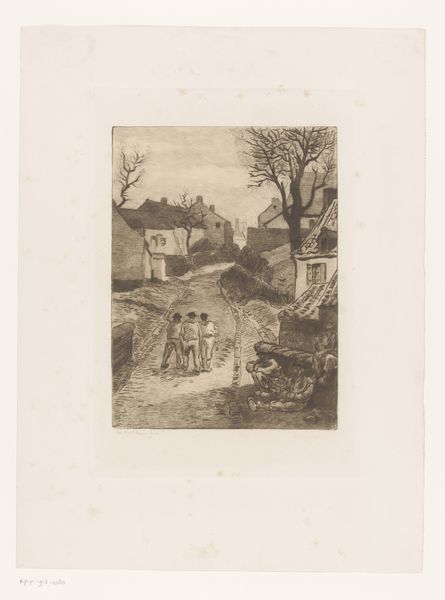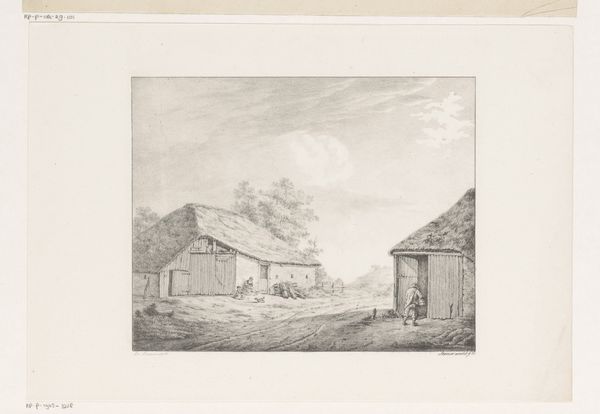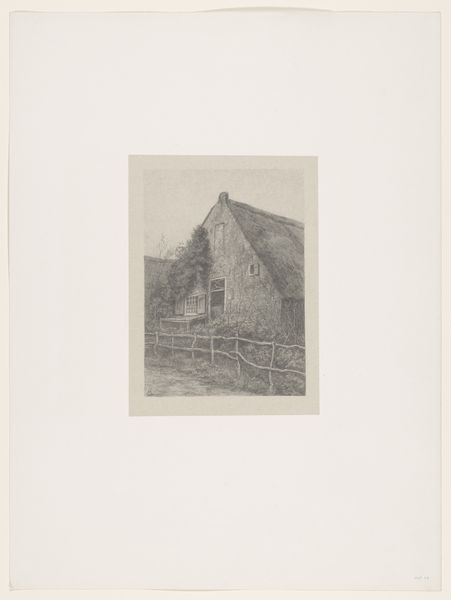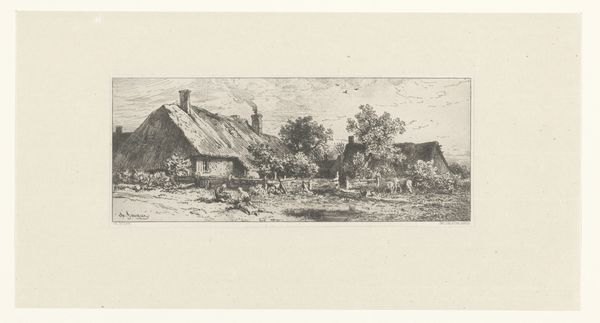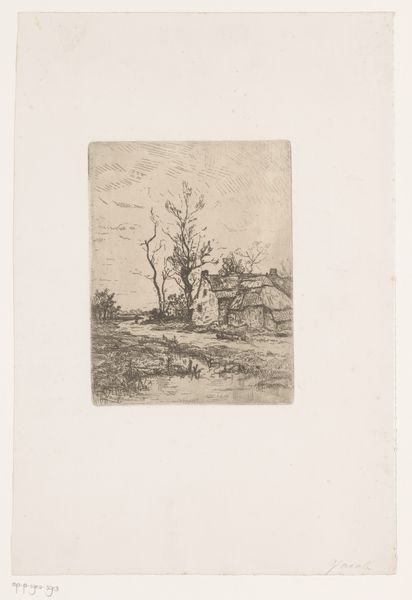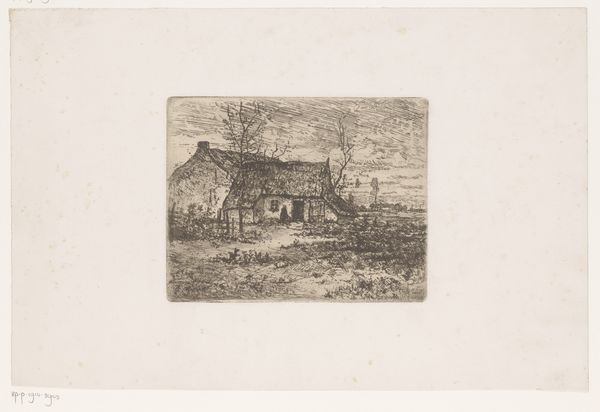
print, etching
# print
#
etching
#
landscape
#
cityscape
#
academic-art
#
realism
Dimensions: height 241 mm, width 160 mm
Copyright: Rijks Museum: Open Domain
Curator: Here we have Auguste Danse's 1887 etching, "Gezicht bij Bouillon"—or, "View Near Bouillon," housed here at the Rijksmuseum. Editor: It feels steeped in quietude. The composition draws me into a very intimate, almost private, space—marked by weathered stone and a subtle, overcast sky. Curator: Absolutely. Danse, though less known now, engaged directly with the visual language of Realism and Academic art, presenting a seemingly unvarnished perspective of a specific place. Considering its creation date, we might see it as a moment in Belgium's self-imaging as a modern nation negotiating a romantic past. What narratives of labor or social class might the ruined structure suggest? Editor: The ruins! Those suggest decline, yet the scene isn't bleak. Note how Danse's masterful etching technique evokes texture: the roughhewn stone juxtaposed against the organic form of the trees—and the clouds, reminiscent of Dutch Golden Age landscape painting. It creates an echo, doesn't it? The symbol of permanence in dialogue with transience, history blending with nature. Curator: It becomes a reflection of both personal experience and cultural memory. Bouillon, as a place, carries significant weight within Belgian and broader European history, filled with tales of feudal power and strategic military importance. Danse gives us a very quiet scene, prompting the viewer to think about the intersection of everyday life and historical forces. Editor: So this decaying wall becomes a sort of palimpsest then, where we find the hidden signs of generations? The light seems to almost venerate it... suggesting memory endures beyond material forms. Curator: Precisely. It asks us to engage with those visual symbols critically, not just for aesthetic appreciation, but as an opportunity to explore the complexities inherent in historical representation. Editor: Thinking about those symbols gives it an added layer that brings more emotional depth and historical insight. I really appreciate how that changed my perception! Curator: Agreed; situating this unassuming etching in its wider social and cultural framework truly allows us to explore it far more deeply.
Comments
No comments
Be the first to comment and join the conversation on the ultimate creative platform.
